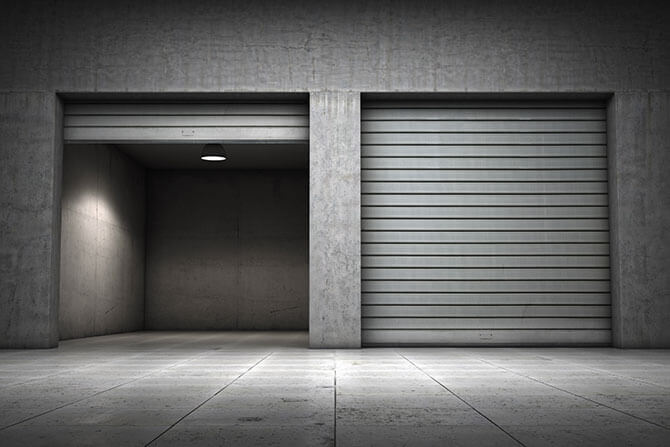When you store things, you’ll need to get a big enough locker or storage area so that you don’t have to stack things up to the ceiling to fit them all in. If you want to get at things easily or if you want to display furniture for sale, get a big locker so you can spread things around.
You’ll have to keep your furniture padded to dust-protect it and to keep things from scratching or gouging each other when they are being stacked or not stacked and slid around.
Boxes should be labeled on top and on 1 or 2 sides and stacked so that they can be easily read, if possible. Stack lighter things on top of heavier things and don’t leave any booby traps that can unexpectedly tumble and break things when they are being unstacked later.
Here is some detailed info on how to successfully store household items or furniture in various storage facilities and environments safely.
Commercial Self-Storage
When you use a self-storage facility, you will have immediate access to all of your goods in the storage locker whenever the facility is open. This can be quite advantageous to you.
However, there can be problems with commercial self-storage facilities. If you go past due over 30 days on your rental fees, they normally add a padlock of their own to your rented lock on your locker to prevent you from gaining access to your things until the bill is brought up to date and a fine is paid. In 60 days, they may auction off your things if your bill is still not paid.
Also, the walls on the lockers are usually made out of corrugated metal and there are gaps that will allow bugs or rodents to infest your things. Since the general public can come and go with anything they might want to store, it is quite possible for your locker to become infested.
Basement Storage
Usually, the advantage of basement storage is that there is no charge for it because it’s an unofficial deal with one of your relatives or friends. But there can be significant problems with basement storage.
First of all, basements can flood or have seepage that can ruin furniture. Usually, obtaining some pallets and putting all of your things up on them can solve this problem. But if a drain backs up, the flooding can exceed the pallet’s height! Pipes can also burst unexpectedly which would require plastic drop cloths over your goods.
Secondly, bugs or rodents can be present and infest your things. If they are there, you’ll have to set out some traps and just hope for the best.
Thirdly, things in a damp basement can easily suffer mold and / or mildew damage. In a dry basement, dust can settle on furnishings bringing mustiness and dinginess.
Also, should there be an altercation between you and the owner of the basement, in which case you could suffer damages to your goods from the other party’s wrath or things could be stolen or thrown out or put on the street. Or the other party may demand that you remove your things immediately which could be quite inconvenient for you.
Garage Storage
All of the problems with basements mentioned above also apply to garage storage. Additionally, it is easier for thieves to break into an unattended garage than a basement to steal your things.
And think about this: there are extreme heat and cold conditions that can occur which might cause damage to some of your goods. Or the roof could leak water from rain or melting snow onto your goods which would require you to cover everything with plastic drop cloths.
Hornets and wasps, rats, squirrels, and raccoons have also been known to infest garages and could damage your goods.
Attic Storage
Most of the problems with basements and garages mentioned above also apply to attic storage.
Apartment Locker Storage
Usually, apartment lockers are in the basement so all of the problems with basements mentioned above also apply here. Always be sure to securely lock up your storage area.
Trailer Storage
All of the problems with basements and garages also apply to storage kept in a trailer.


